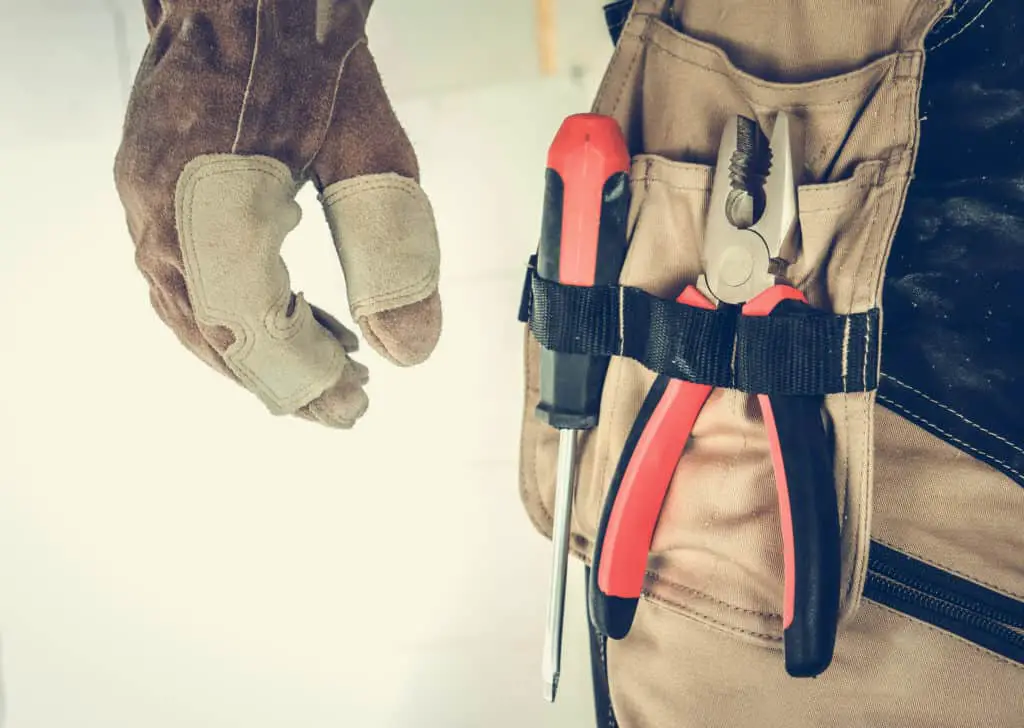I worked with an electrician colleague last week who has been in the game for the last 40 years. He loves his job and takes great pride in the work he does. As we were finishing up the second fix on a kitchen I noticed that he had left all the screws on the sockets vertical.
Whilst I’ve seen this before, I’m always impressed when an electrician shows this much attention to detail. What ensued was a conversation with the much more experienced sparky about why electricians leave screws vertical and if there really is any point to it in this day and age.

Why Do Electricians Leave Screws Vertical or Horizontal?
If you have hired an electrician that has left all the screws vertical then congratulations. If they have shown this much attention to detail, the chances are that the work you cannot see, such as the connections below the floorboards, is given just as much care and attention.
Electricians leave screws vertical for the simple fact that it looks professional and pleasing to the eye. It can also be used as a good method to ensure that the screws are not overtightened. The idea is, that we tighten the screw until it just pinches, then slacken it off a quarter turn to prevent overtightening and cracking the faceplate.
Whether or not the screws are left vertical or horizontal, it is a nice touch that shows, (like the experienced colleague of mine), that they have taken the time and effort to care about the work they are doing.
Does It Matter if Electrician Screws Are Left Vertical or Not?
Whilst it is visually appealing, there is no real reason to leave electrical screws all vertical or horizontal and it doesn’t really matter if they are left that way or not. In reality, the chances of the electrician that you hire leaving screws all vertical or horizontal are pretty slim.
I personally leave screws all facing the same way if four main factors line up.
- I am trying to make a really good impression
- The screws are very obvious (such as on certain metal clad socket outlets)
- I have the time
- The customer has been extra nice and I want to go above and beyond
There is nothing like the heartbreak of hearing the crack as we overtighten a faceplate and realize we have to start all over again. Every apprentice will know this feeling. Leaving screws vertical can be a way to combat this problem by always slackening the screw off to the vertical position.
In my opinion, most electricians learn pretty quickly not to overtighten and crack the faceplates as the agro caused by having to redo the work is a great reason for making us learn quickly from our mistakes.
Having all the screws face vertical or horizontal is a nice touch but I don’t think it would go down very well if you asked the electrician for a return visit to align all the screws up!
Is It Important?
It looks very visually appealing when electricians leave screws vertical and is a good sign that the electrician takes a lot of pride in their work. I don’t think it’s a coincidence that my colleague who inspired this post likes to leave screws this way – and I know from working together on lots of jobs that he takes a lot of pride in all his work.
If it looks so good then why don’t I leave screws vertical all the time?
It’s a fair question and I’m sure that tomorrow whilst the idea is fresh in my mind I will turn all the screws the same way. Heck, I might even remember to keep it up all week. But sitting here, even with the best intentions in the world I know I am not going to sustain it long term.
The reason I can be confident of my upcoming failing is knowing that I will simply forget, or get distracted by other more pressing work. Time constraints on jobs seem to be getting tighter and tighter. It’s common to have bosses on the phone asking when we are going to finish up and get on to the next job. Unfortunately, this means that aesthetic touches such as leaving screws all facing vertical or horizontal are often pushed aside.
Bonus Question:
What Thread are Electrical Socket Screws?
Electrical socket screws are usually M3.5mm thread and come in various lengths such as 20mm, 25mm, or 30mm. The length required will be dependent on how deep in the wall the backbox is. If you are unsure a good tip can be to buy longer screws as they can be cut to length relatively easily.
Be careful that the screws are not so long that they go into the backbox and end up damaging the cables inside. This is a common apprentice error and one to watch out for as you are learning the trade.
Another apprentice tip is to always keep spare M3.5 screws in your toolbox as the small thread size makes them easy to mistakingly strip. Having a few spares lying around will always come in very useful.
See Also: What Does An Electrician’s Mate Do?

